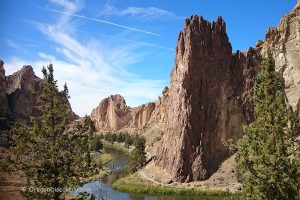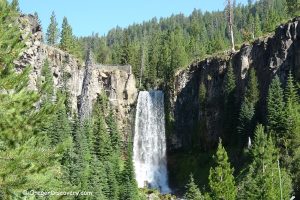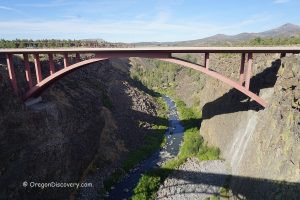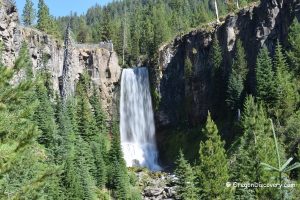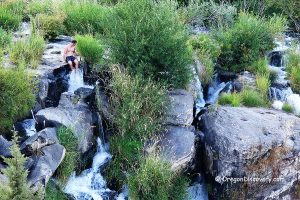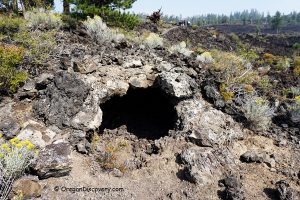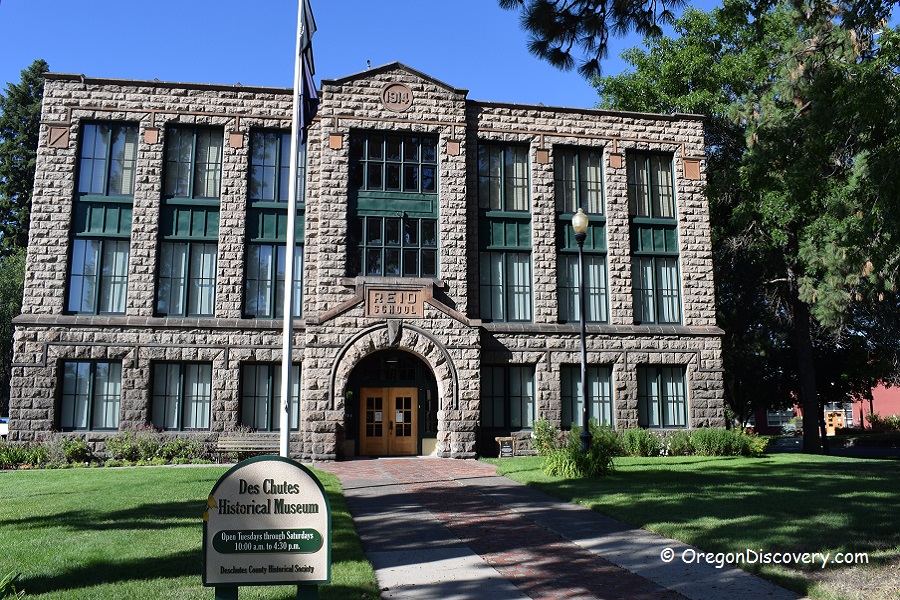
Before the first explorers arrived in the early 19th century, for almost 12,000 years the territory along the Deschutes River was home to Native Americans, their hunting and fishing place.
Europeans began exploring present day Deschutes County around 1813. Among the first to set foot on the Central Oregon soil was a fur trading party in search of beaver. The rock on which the party carved their initials and the date can be now found at the Deschutes County Historical Society.
At that time, the United States was steadily expanding to and beyond the Mississippi River and nearly doubled in size between 1830 and 1860. Growing territory coincided with the arrival of European and Asian immigrants and the discovery of gold in 1849. New opportunities led to the relocation of many to the West inhabited by the Native American tribes, under the military protection of the US Government and with its assistance.
Oregon became a state in 1859. Central Oregon, however, remained predominantly unsettled. Only several years later cattle ranchers Felix Scott Jr., Marion Scott, John Craig, and Robert Millican became the first Europeans who spent a winter there. Overall, the first settlers were mostly farmers, ranchers, and shepherds. As time progressed, however, businessmen started arriving in the area, bringing investments and ideas for business ventures.
Bend started as a logging town at the beginning of the 20th century with the first commercial sawmill established in 1901, and the second one in 1903. The gradually growing community was incorporated as a city in 1905 with approximately 500 people. The name “Bend” derives from “Farewell Bend” used by early settlers to define the territory along the Deschutes River. The Post Office Department in Washington, DC decided that “Farewell Bend” was too long and approved the shortened version of the name.
Transportation remained a major problem for Central Oregon, which at the dawn of the 20th century was the largest US region without a railway. The closest line, the Columbia Southern Railroad, ended in Shaniko leaving the settlements of Central Oregon, including Bend, in isolation.
The need for a rail line triggered a race between two railroad barons, James J. Hill and E.H. Harriman. They started laying parallel tracks along the banks of the Deschutes River aiming to reach Bend before the other. The race was a tough one at construction sites, where workers continuously sabotaged each other, and in court, where lawyers fought legal battles for their respective clients.
E.H.Harriman died in 1909, and James J. Hill was the one who put a golden spike into the railroad in Bend in 1911, to signify the completion of the line. Afterward, Bend started booming, with more and more investments coming.
The initial source of electricity for the city was a dam on the Deschutes River constructed in 1910. It is still operational and provides electricity to around 200 households. The dam formed Mirror Pond, which is now part of the scenic Drake Park named after Alexander M. Drake, a frontier developer.
By 1915, two large companies, Shevlin-Hixon and Brooks-Scanlon, started building lumber mills south of downtown Bend. By the mid-1920s, the combined lumber capacity for both mills was one of the largest in the world.
The logging era lasted until the 1980s. Shevlin-Hixon closed operations in 1950, while Brooks-Scanlon Lumber Company sold their timber interests in the 1980s. Tourism now became the main industry for Bend and the surrounding areas.
Adventures Nearby


